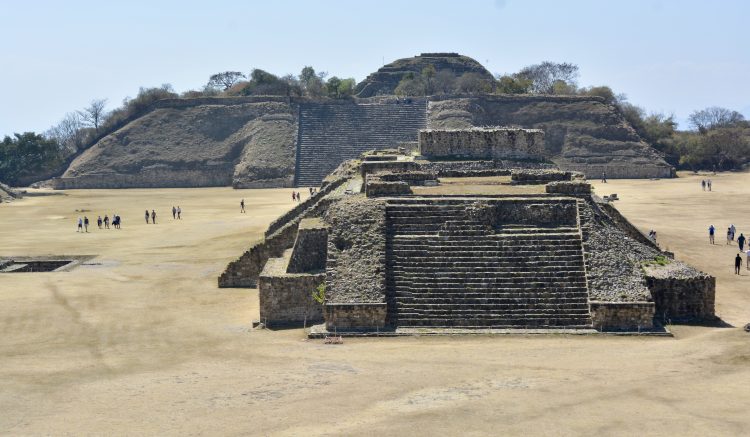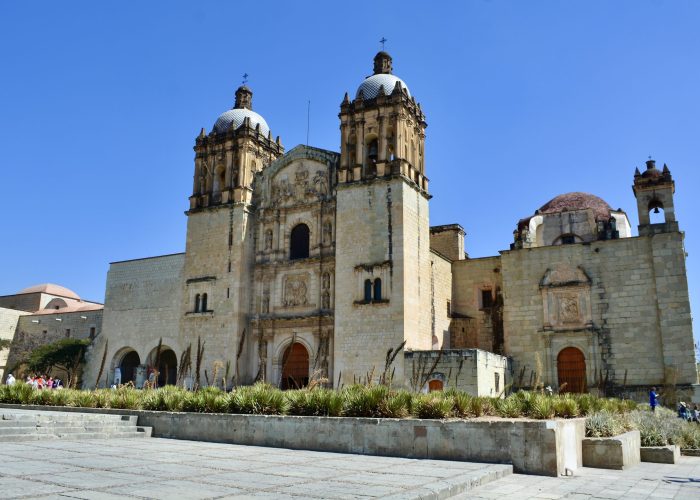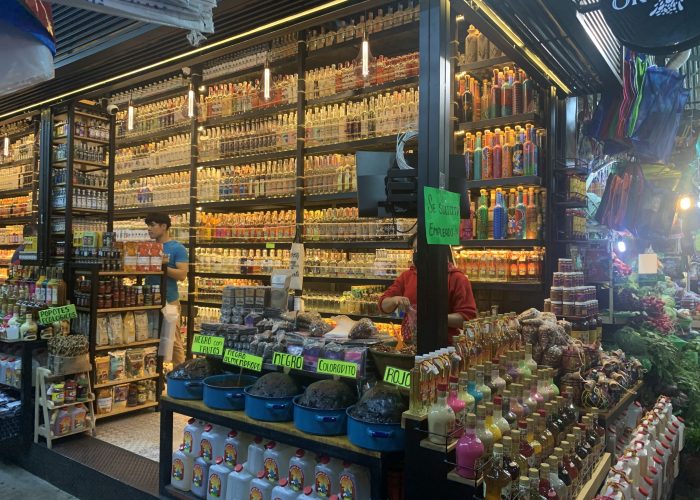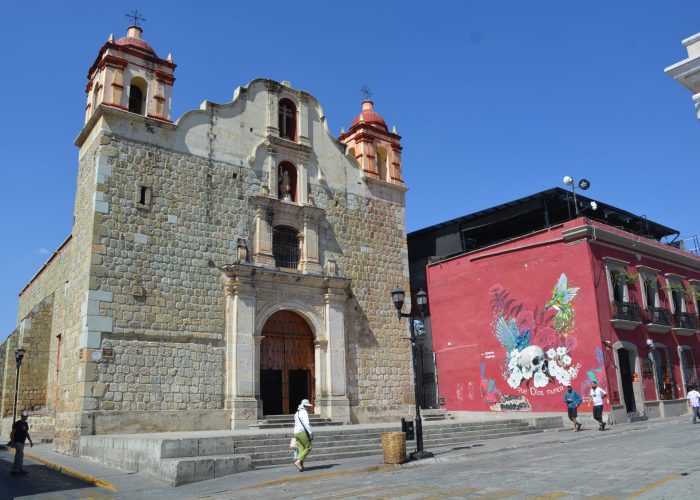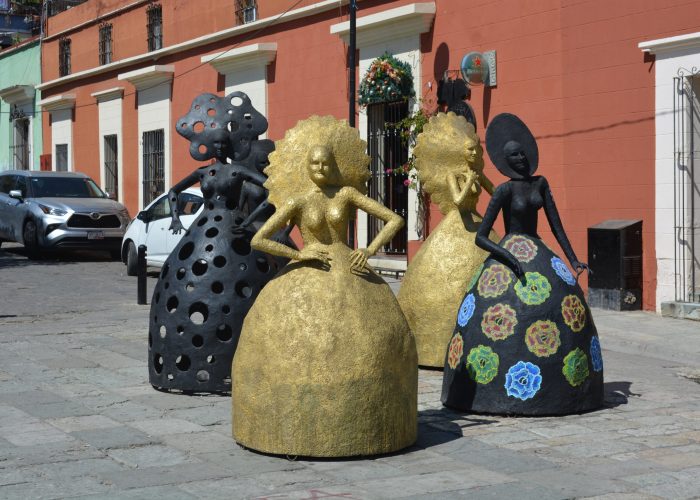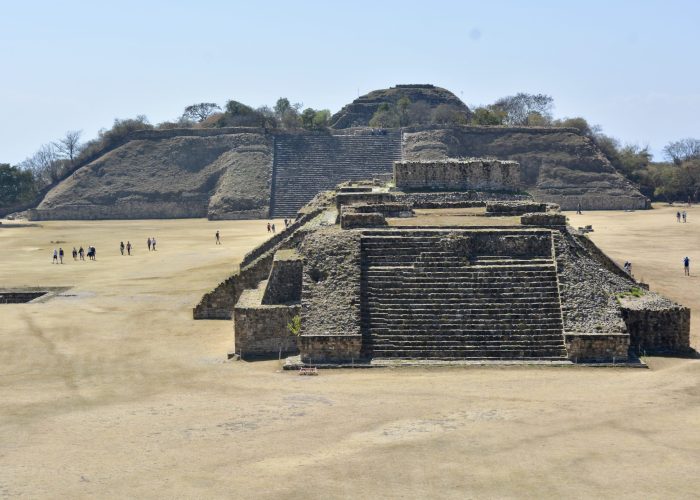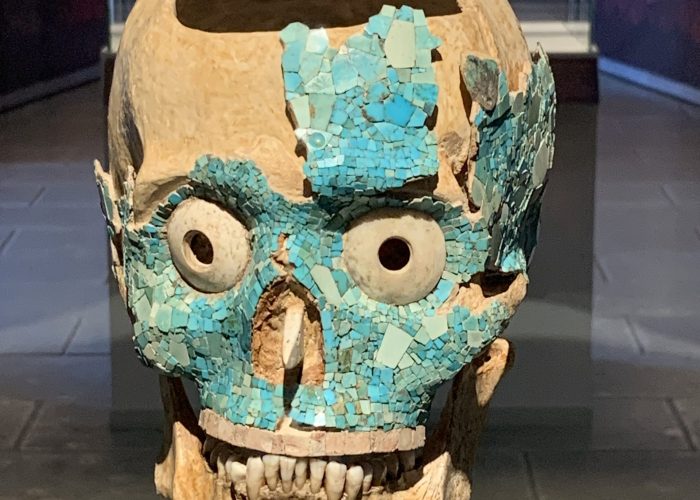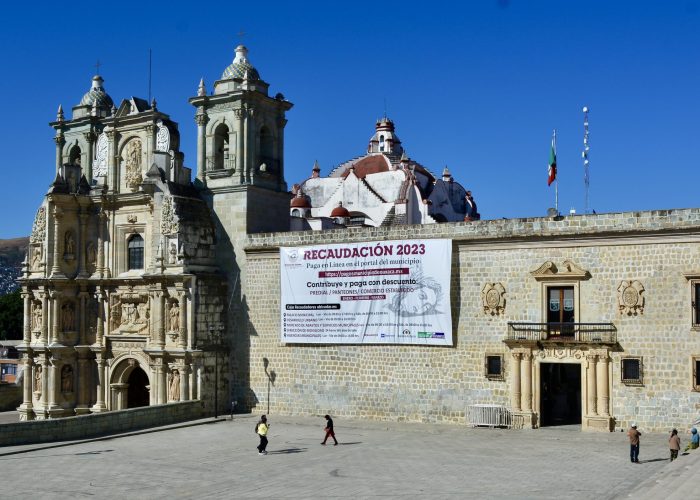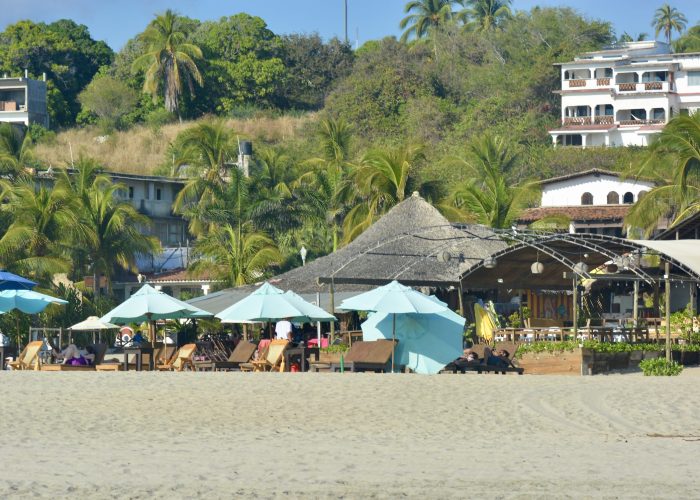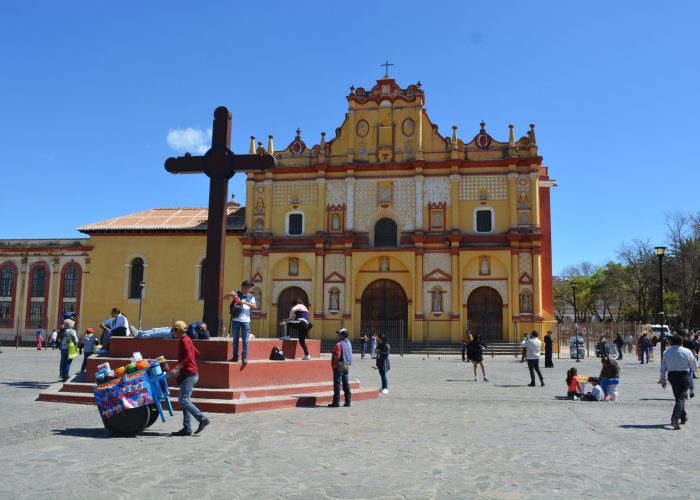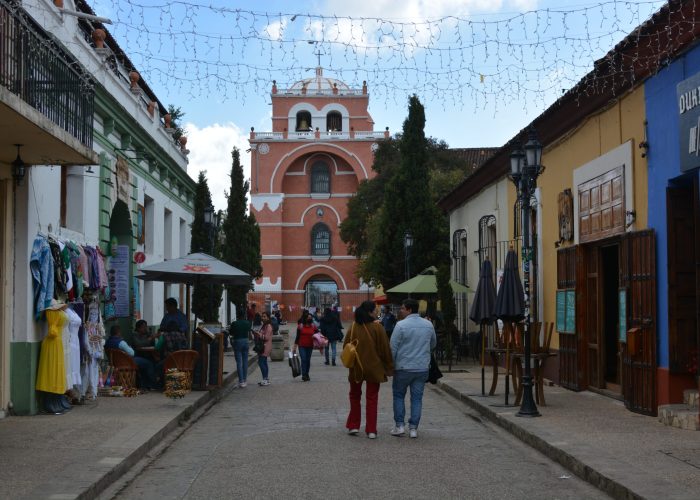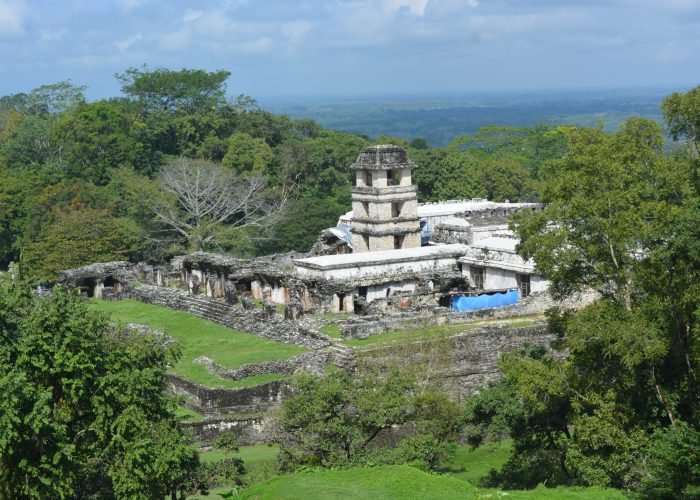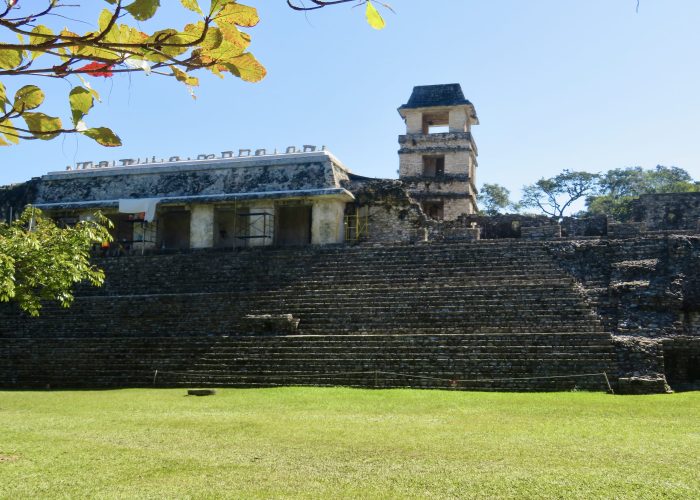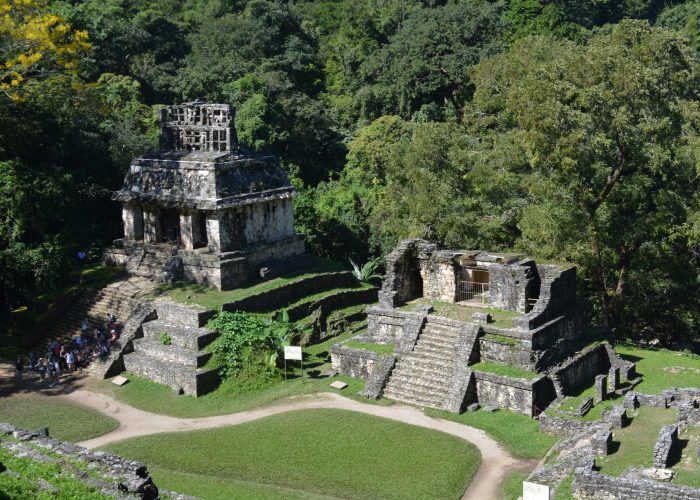Oaxaca has become one of the major cultural destinations in Mexico, and is the type of city where you can simply take time out and just absorb its many attractions. It was the first city in Mexico where the number of foreign visitors is noticeable visible, with many coming from the USA and Canada as well as a number of Europeans. What is also noticeable is that it has visitors across all generations, many of whom have independently travelled as opposed to the package tourist visitors in the coastal resorts.
Food is one of the big draws of Oaxaca, and certainly our experience in the city supported this, in that all five principal evening meals were all of the highest quality. What is particularly noticeable about the food is that presentation is of the highest standard and the use of many of the unique Mexican produce and spices makes for an interesting and exciting experience. Prices in some of the higher end restaurant are similar to those back home, but in others still represent good value.
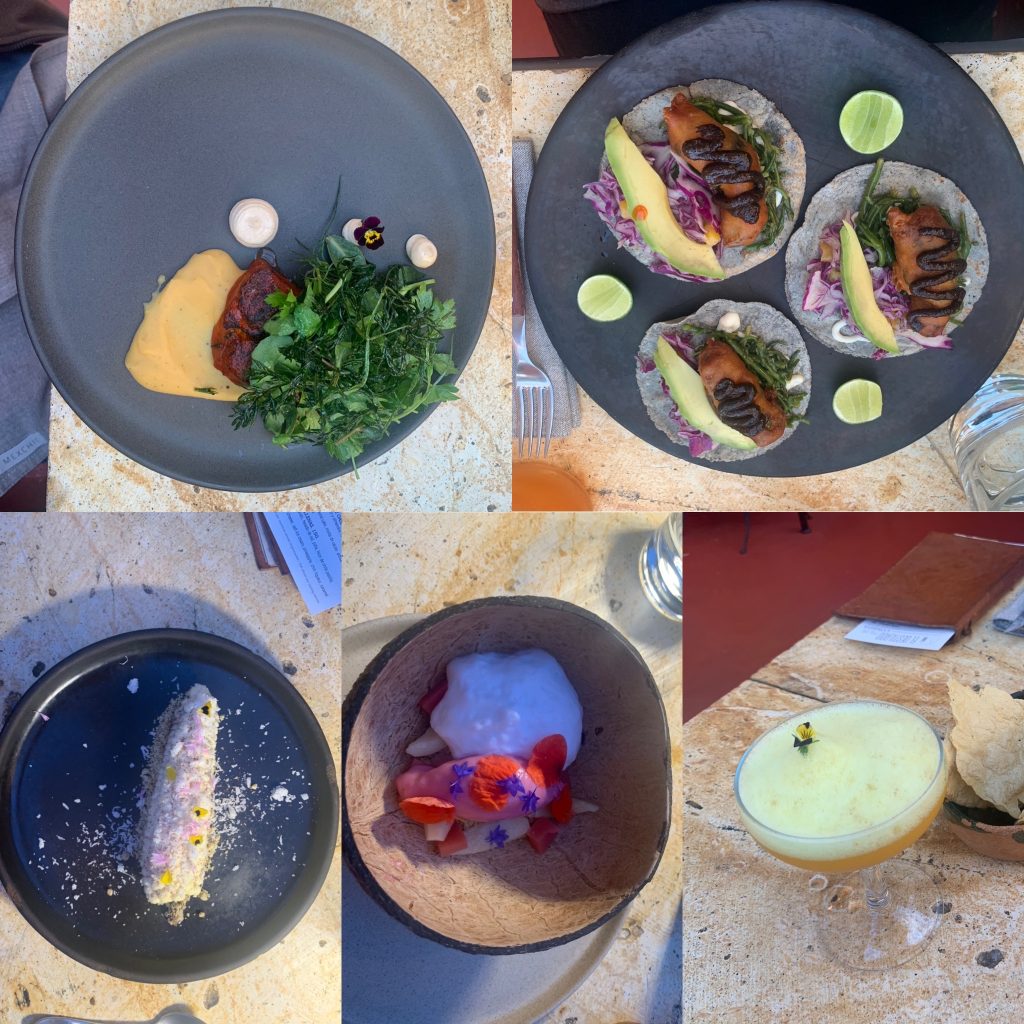
During our time in Oaxaca we visited the following restaurants which were at the time all in the top 20 restaurants in Oaxaca:
- Tr3s 3istro Restaurant & Oyster Bar
- Casa Taviche
- El Destilado
- Origen
- Cafe Bistrot Epicuro
Oaxaca is not only a pretty colonial tourist town, it also has a grittier side. While we were there, there were a couple of demonstrations, all peaceful. Also on the trees outside the cathedral were a number of hanging pictures of people who had disappeared.
The covered market near the Zocalo is a great place to get lost and has a vast range of food and also artisan stalls. The quality of the produce looks very good and also represents great value.
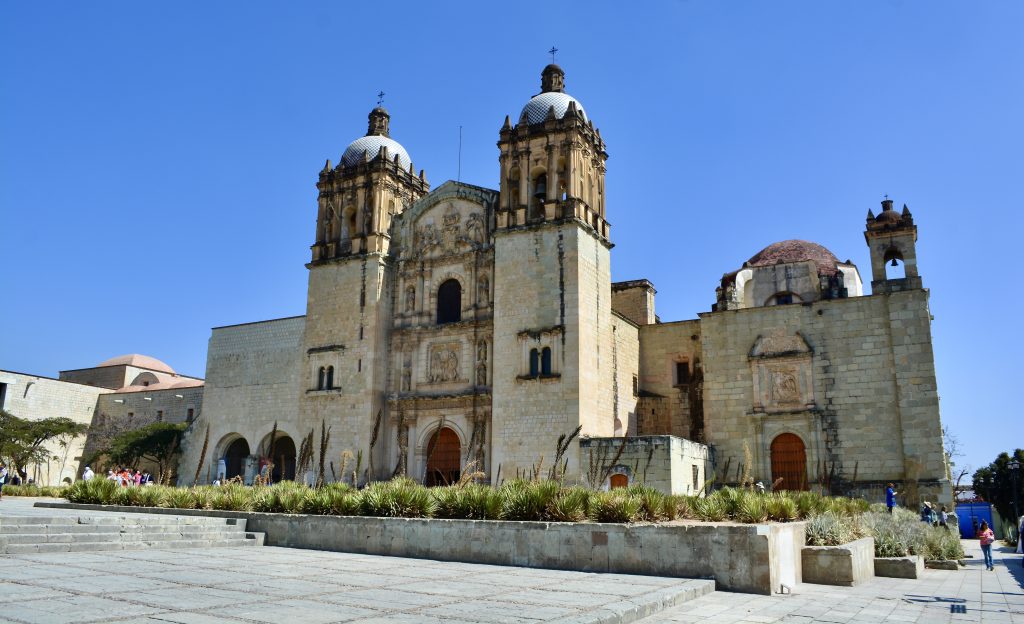
There are many churches in Oaxaca and unusually the cathedral while large and impressive is not the best church in Oaxaca. That accolade belongs to the Templo de Santo Domingo de Guzmán, which has some very impressive carvings and gold leaf across all the altarpieces. Also attached to the church is the Museos de las Culturas de Oaxaca which if you visit one museum, then this has to be it. The museum is set in the cloisters of the church and has many fine artefacts from the nearby Monte Albán archaeological site, including many from the largely intact Tumba VII.

The other church worth visiting is the Basilica de Nuestra Señora de la Soledad which is also set in a big peaceful square away from the hustle of the centre of Oaxaca.
A few kilometres outside of Oaxaca is the Monte Albán archaeological site. It is definitely worth having a guide to take you round the large site. The Zapotecs built the complex in the classic period unto around 800 AD, around the same time as the classic Mayans and Teotihuacán. All three civilisations collapsed around the same time and the site was largely abandoned, to be replaced by much smaller civilisations and ultimately the Aztecs.

Rather like Teotihuacán the site consists of a number pyramids and big open spaces between them. Only a small proportion of the site has been restored, with much more still covered in vegetation. In the intervening years much has been looted, but Tumba VII was largely intact and contained lots of artefacts. One of the more unusual parts of the site are the Danzantes Stones which show images of people that were initially thought to be dancers, but in reality were more likely to be human sacrificial victims probably from the conquest of war.

The Zapotec civilisation who built Monte Albán collapsed many years before the Spanish arrived, hence there were no churches built in Monte Albán or any other aspects of Spanish colonial power on the site, unlike the sites at Cholula and Tlatelolco in Mexico City. The history of Mesoamerica is one of changing civilizations, the Zapotecs, together with the Mayans and Teotihuacáns were all dominating their various regions up to the late classic period of around 800AD after which many smaller civilisations appeared before the warlike Aztecs consolidated their power before the Spanish arrived.
From Oaxaca our journey took us to Puerto Escondido on the Pacific Coast. As the crow flies it should be a simple 200km or so straight down to the coast, however the road is poor so the bus went almost as far South before going to the coast and then going back North on the coast road, making a 12 hour long journey.
Puerto Escondido is a resort town with a big sandy beach and large enough waves to make it a very popular surfing resort. We were there in January, so while there were a number of visitors and surfers, especially in the morning, the resort was not overly busy as it is technically winter and the off season. It is a pleasant beach resort and a good place to relax, also it has not been overwhelmed by mass tourism and large hotels unlike some of the other Mexican coastal resorts.
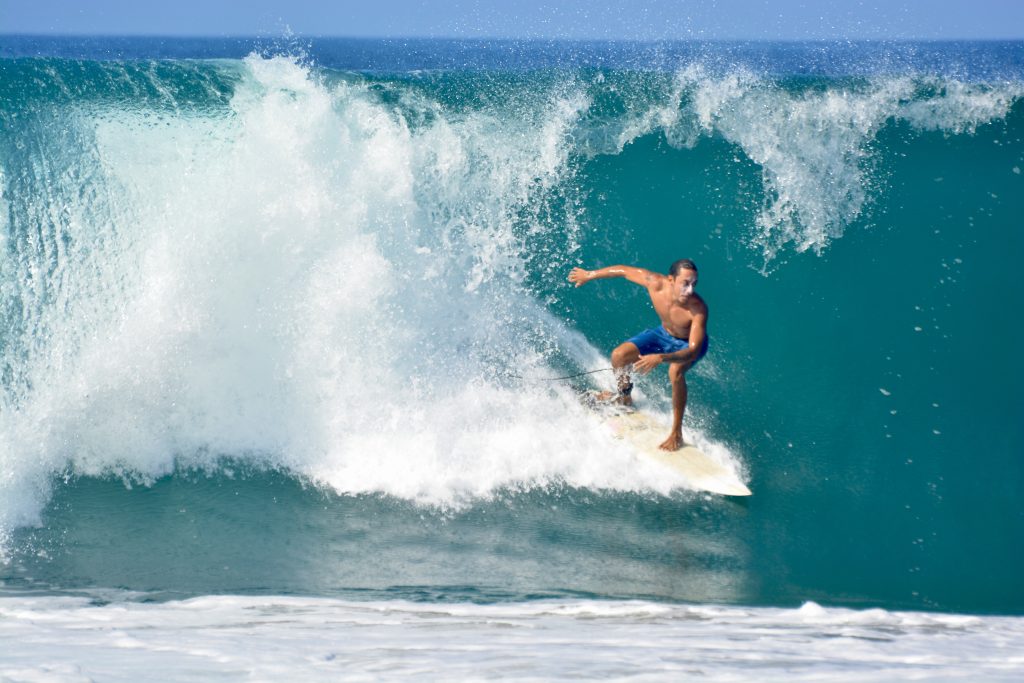
From Puerto Escondido an overnight bus journey took us to San Cristóbal de las Casas in Chiapas province adjacent to the Guatemalan border. San Cristóbal is a very attractive old colonial town with cobbled streets and low rise buildings. It is a relaxed place and is great for some downtime in any schedule.
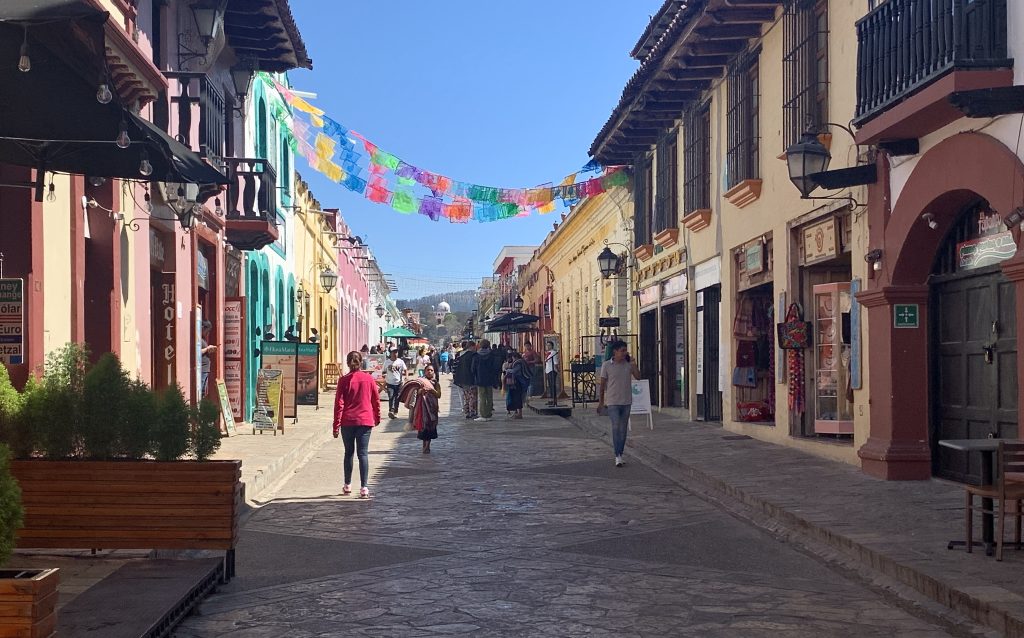
The local indigenous Indian community form a large part of the population here and there are many artisan markets and some impressive textiles. One of the biggest markets is in the grounds of the Templo de Santo Domingo de Guzmán, where there are numerous stalls selling textiles, carvings, amber and unusually pompoms. It seems to be a genuine local cottage industry, with the stall sellers making produce in-between sales. Also there is a night market outside the main cathedral and along the main pedestrianised streets and squares are sellers hawking their wares. Many of the stalls are brim full with stock, and while there are a number of foreign visitors in the town and at weekends a large number of domestic visitors from Mexico City and the other large urban centres, the town must have suffered significantly during the pandemic.
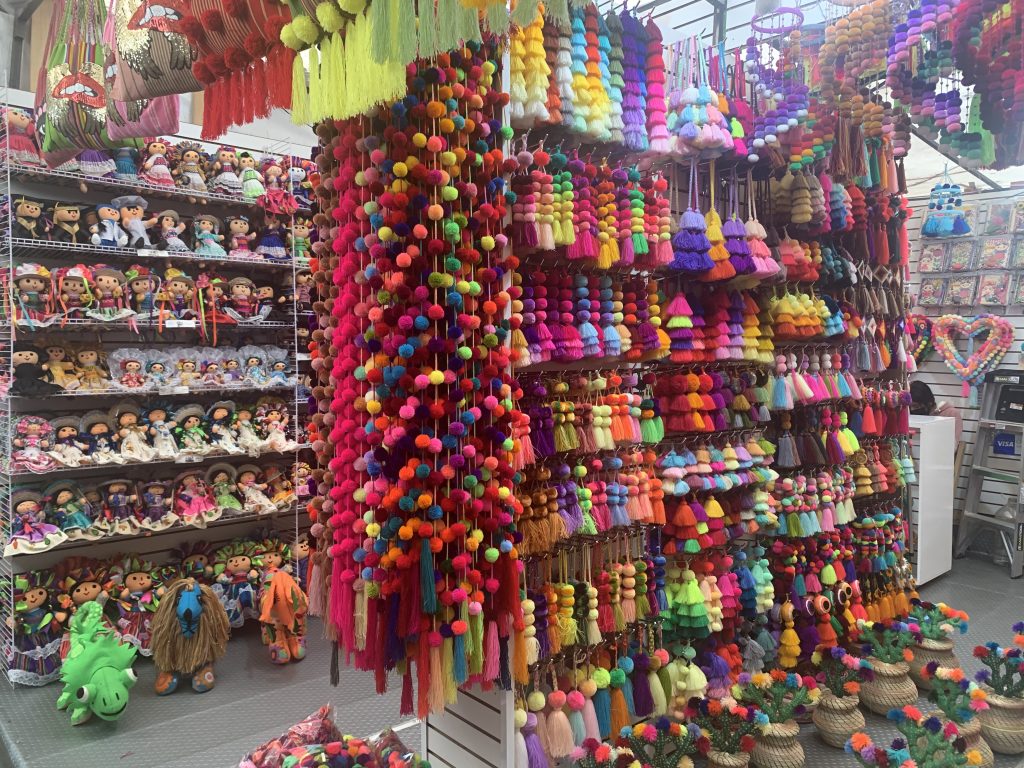
Chiapas province is famous for its amber mines, and there is a small museum in one of the churches displaying some interesting objects, including some pieces containing insects, the most interesting being a small scorpion and a small lizard. Some good coffee is also grown in the surrounding region.
Our final destination in Chiapas was the Mayan archaeological site of Palenque. Again because the direct road to Palenque is not the best, the overnight bus detoured back to Tuxtla Gutiérrez and into Tabasco Province before reaching Palenque. We arrived before 7am on a Sunday morning, not the best time to arrive but time enough to plan and organise our time there.
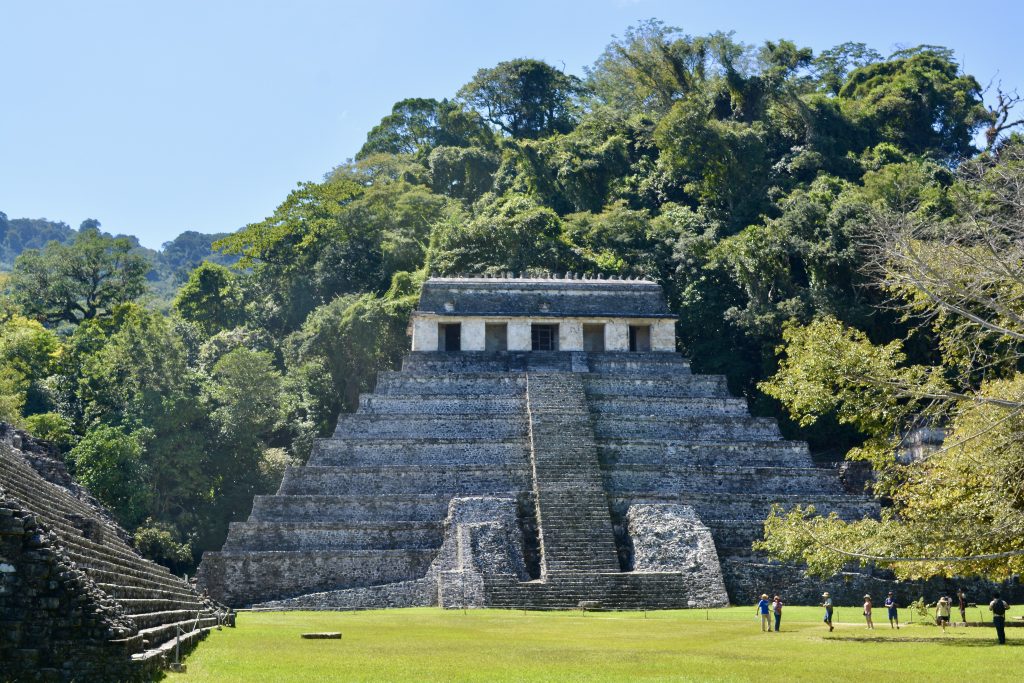
We booked one of the hotels near the Archaeological Park, Palenque town is a pretty ordinary working town, though it does have a number of decent restaurants. A collectivo for MXN 20 takes you into the Park. It being a Sunday the park is free for Mexicans so was quite crowded, but not unbearably so. To enter the park, there are two fee, one to the local State that has to be paid in cash and the other to INAH the State Organisation that runs all the parks in Mexico, which can be paid by card.
The site is surrounded by jungle, and only a few of the principal buildings have been cleared of vegetation and partially restored. The main plaza is impressive, with the royal palace and the Temple of Inscriptions dominating the site. Across the small river is the cross group of temples, which can be climbed and offer good views across the site. Also at the top of these pyramids are some clear carvings of royalty and other important Mayans.
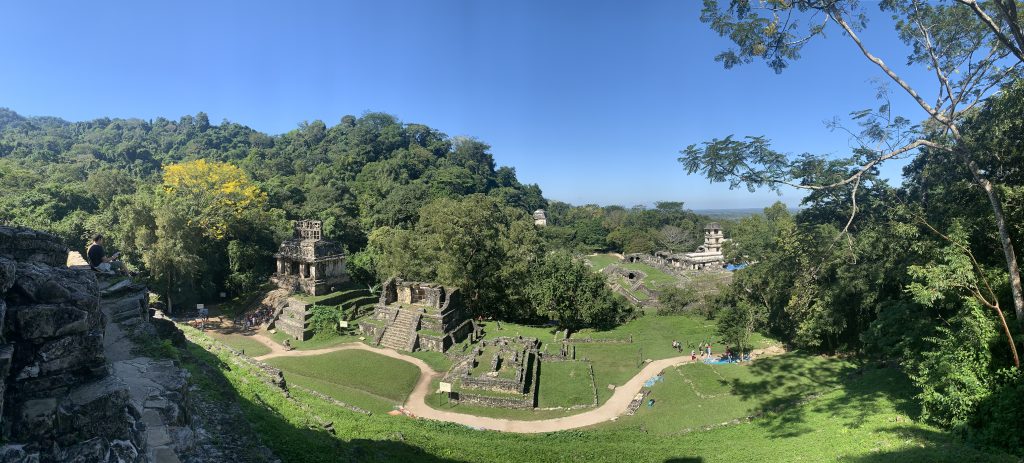
There is also a ball court and some other temples including the Temple of the Count that can also be climbed. The site was at is prime around the Classic and Late Classic period up to around 800 AD when it was abandoned. The level of skills and sophistication of the Mayans was very advanced for its time. Like most of the Mayan sites in Southern Mexico and neighbouring Guatemala, Belize, and Honduras, Palenque was a city state, often in constant conflict with other sites like Tikal, Calakmul etc.
The well curated museum on site is worth exploring and contains a number of funeral masks and also the story of the red queen, whose tomb was found relatively complete.
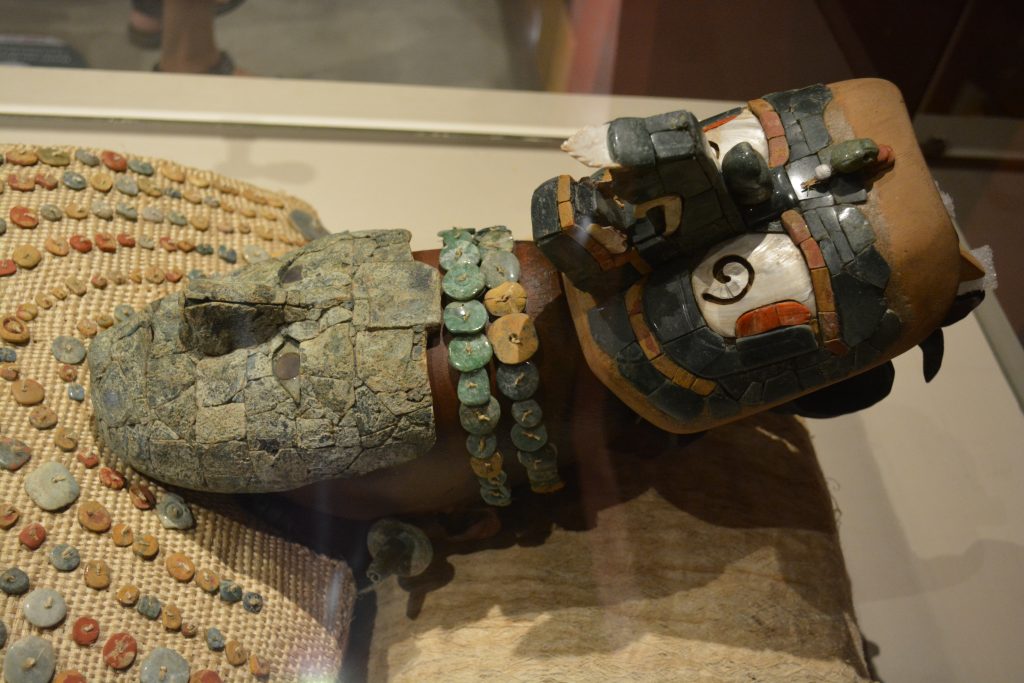
A reasonable day trip from Palenque are a couple of waterfalls, one at Agua Azul, a series of wide cataracts that you can walk upstream and a second waterfall at Misol Ha, where you can walk behind the main falls.
